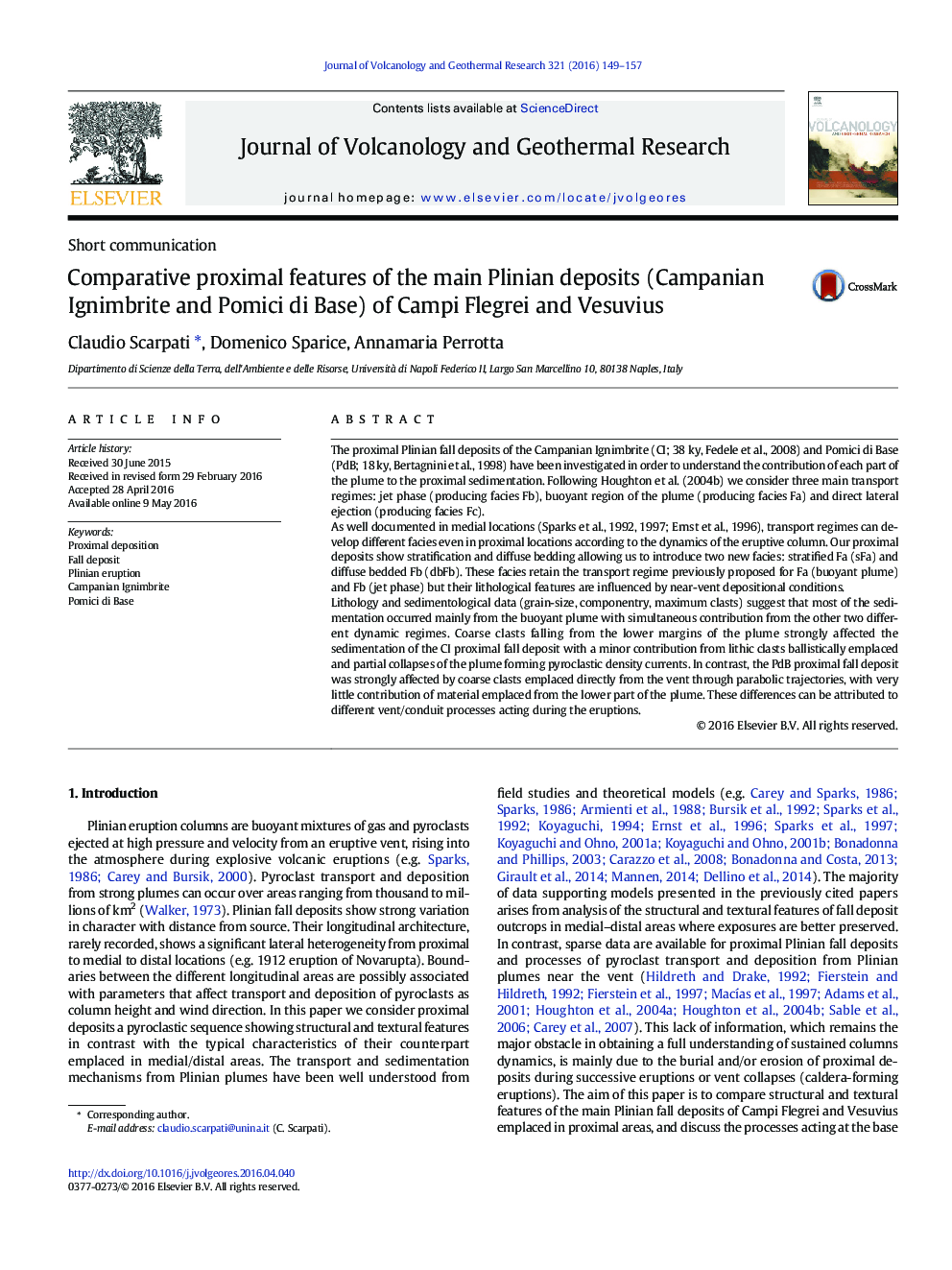| Article ID | Journal | Published Year | Pages | File Type |
|---|---|---|---|---|
| 4712973 | Journal of Volcanology and Geothermal Research | 2016 | 9 Pages |
•New proximal facies of Plinian fall deposits•Main Plinian fall deposits of Campi Flegrei and Vesuvius•Experimental approach for sampling and grain size analysis of coarse deposits•Sedimentation influenced by material emplaced from different parts of the plume•A simple method to discriminate the contribution of the different transport regimes
The proximal Plinian fall deposits of the Campanian Ignimbrite (CI; 38 ky, Fedele et al., 2008) and Pomici di Base (PdB; 18 ky, Bertagnini et al., 1998) have been investigated in order to understand the contribution of each part of the plume to the proximal sedimentation. Following Houghton et al. (2004b) we consider three main transport regimes: jet phase (producing facies Fb), buoyant region of the plume (producing facies Fa) and direct lateral ejection (producing facies Fc).As well documented in medial locations (Sparks et al., 1992, 1997; Ernst et al., 1996), transport regimes can develop different facies even in proximal locations according to the dynamics of the eruptive column. Our proximal deposits show stratification and diffuse bedding allowing us to introduce two new facies: stratified Fa (sFa) and diffuse bedded Fb (dbFb). These facies retain the transport regime previously proposed for Fa (buoyant plume) and Fb (jet phase) but their lithological features are influenced by near-vent depositional conditions.Lithology and sedimentological data (grain-size, componentry, maximum clasts) suggest that most of the sedimentation occurred mainly from the buoyant plume with simultaneous contribution from the other two different dynamic regimes. Coarse clasts falling from the lower margins of the plume strongly affected the sedimentation of the CI proximal fall deposit with a minor contribution from lithic clasts ballistically emplaced and partial collapses of the plume forming pyroclastic density currents. In contrast, the PdB proximal fall deposit was strongly affected by coarse clasts emplaced directly from the vent through parabolic trajectories, with very little contribution of material emplaced from the lower part of the plume. These differences can be attributed to different vent/conduit processes acting during the eruptions.
